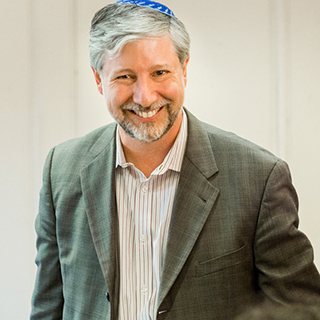A Just and Sustainable Society

Devarim | Tishah Be'av
By :
Daniel Nevins JTS Alum (Rabbinical School), Former Pearl Resnick Dean of The Rabbinical School and the Division of Religious Leadership
Posted On Jul 13, 2013 / 5773 | Torah Commentary | Holidays Social Justice




What is your vision of a righteous city? This is an important question, because this week is known as Shabbat Hazon, the Sabbath of Vision, and the vision offered by our prophets is that of a city that has gone astray, abandoning the path of righteousness. In our haftarah, the book of Isaiah opens with the chilling depiction of a “faithful city” (kiryah ne’emanah) that has become distorted into harlotry. What sins does Isaiah associate with such faithlessness? It is not ritual error but ethical failure that he decries. If so, then what would a righteous city look like? Is such a vision within our grasp?
Shabbat Hazon leads into the black fast of Tish’ah Be’Av in various ways. The opening chapters of Deuteronomy and Isaiah, which we read this week, set the stage for the calamity that will be described in horrific detail by the book of Lamentations. In Midrash Eikhah Rabbah, we read that three prophets used the language of Eikhah (how?!) to describe the sorrows of Israel. Moses, who saw the people in its glory, asked, “How can I bear their burden alone?” Isaiah, who saw Israel in its fallen state asked, “How did the faithful city become a harlot?” And the book of Lamentations, traditionally attributed to the prophet Jeremiah, saw Jerusalem destroyed and asked, “How did the great city become like a widow?”
These three questions are all phrased with the Hebrew word for how (eikhah). In the same text, Rabbi Nechemiah says that the word eikhah indicates lament (kinah). Rabbi Yehudah says that it indicates reproach (tokhecha). Reproach and lament go together of course. The destruction of Jerusalem is exceptionally lamentable because it is viewed as a self-inflicted wound. From Moses to Isaiah to Jeremiah, we can trace Israel’s descent from arrogant power to dissolute immorality and then on to utter destruction.
This path from privilege to catastrophe points back to the opening question—what is our vision of a righteous city? Does the place where we live fit the bill? What would it take to restore it to a center of justice and compassion? What is the role of the religious community in creating a just and sustainable society?
Isaiah’s words are chilling. He tells the people not to rely on ritual alone. They may have been meticulous about prayer and sacrifice, but they have oppressed the poor and ignored the cries of those who suffer. Zion will be rebuilt through righteousness, he says in the closing line of the haftarah. There will be righteous judges and the city will once again be faithful. Only a just society can survive. This is the repentance envisioned by our great prophets. How does it square up with our own reality?
Despite the challenges of our current economy, we Jews continue to live in a position of great privilege. In North America, we have large and prosperous communities with great synagogues, day schools, and other impressive organizations. In Israel, we have an entire State with its impressive apparatus of government, military, education, health, and industry. Individuals struggle economically and many institutions are fiscally challenged, but the Jewish communities of Israel and the Diaspora still have unprecedented resources. We can be described aptly by the Eikhah of Moses—the Jewish People is large, powerful, and prosperous—what is it doing with its might?
It is the second Eikhah of Isaiah that ought to grab our attention however. How are our communities perceived? Have we fostered righteous conduct within and without, or are our communities viewed as selfish and materialistic? We can all point to examples of excess, but it seems to me that a growing number of our congregations have indeed embraced social justice as a standard feature of religious life. Some host homeless shelters and soup kitchens; some support sustainable farming; some have taken great efforts to make their communities inclusive and welcoming to people who previously felt excluded.
Now that I am no longer a congregational rabbi, I will admit that my personal involvement in shul is focused heavily on the ritual arena—I often volunteer to read Torah or teach, but have been less active in my synagogue’s prodigious social justice program. One of my goals this year is to change my own behavior and to integrate social justice work into my personal practice.
Shabbat Hazon is the beginning of our long season of repentance. This week, we will end the book of Eikhah with the famous line, “Turn us, Lord, to You, and we shall return; renew our days as of old.” May we embrace this mission of return both individually and communally so that our cities become known, once again, as faithful towns filled with justice and compassion.
Thepublication and distribution of the JTS Commentary are made possible by a generous grant fromRita Dee and Harold (z”l) Hassenfeld.